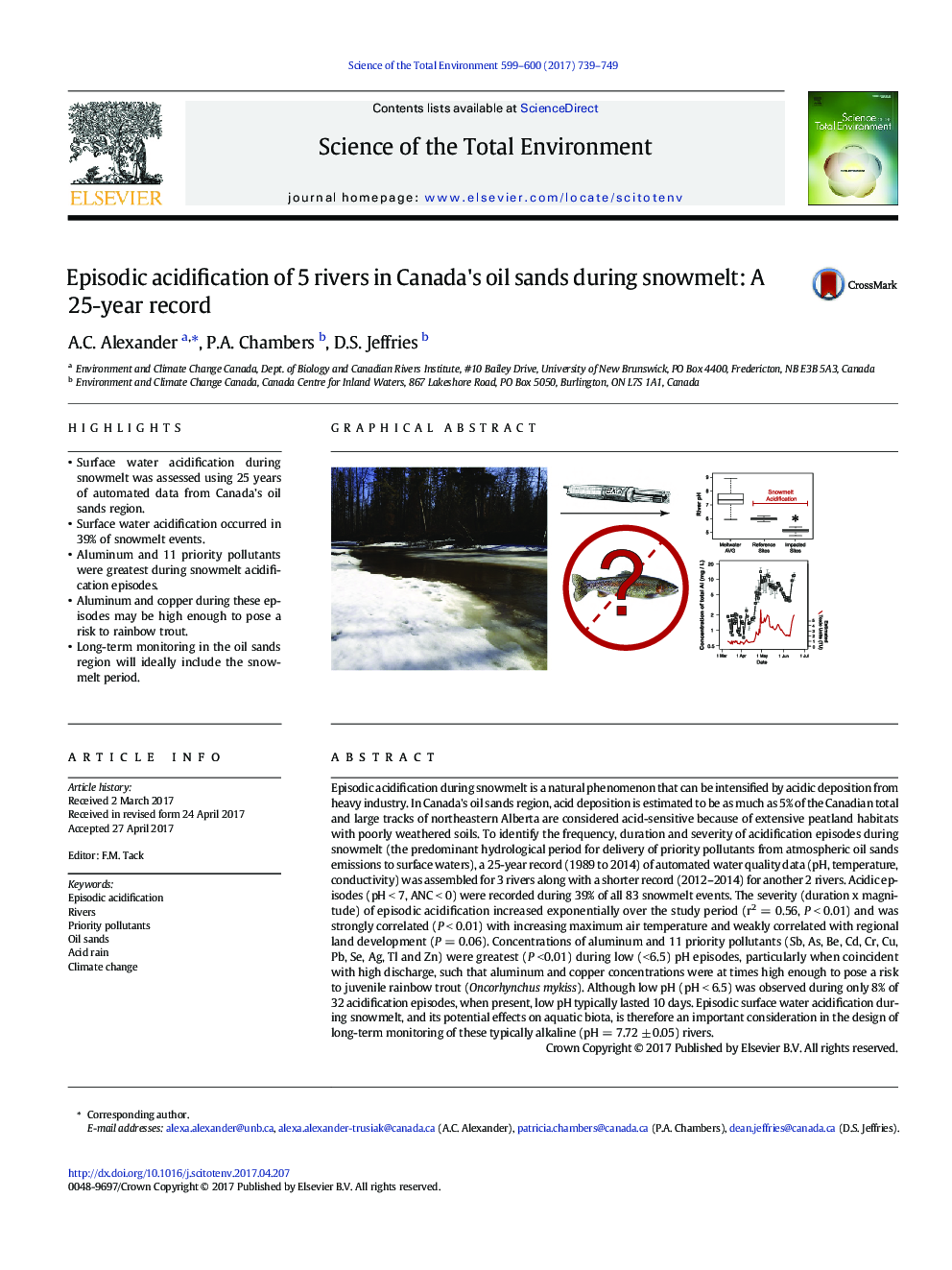| کد مقاله | کد نشریه | سال انتشار | مقاله انگلیسی | نسخه تمام متن |
|---|---|---|---|---|
| 5750538 | 1619698 | 2017 | 11 صفحه PDF | دانلود رایگان |
- Surface water acidification during snowmelt was assessed using 25 years of automated data from Canada's oil sands region.
- Surface water acidification occurred in 39% of snowmelt events.
- Aluminum and 11 priority pollutants were greatest during snowmelt acidification episodes.
- Aluminum and copper during these episodes may be high enough to pose a risk to rainbow trout.
- Long-term monitoring in the oil sands region will ideally include the snowmelt period.
Episodic acidification during snowmelt is a natural phenomenon that can be intensified by acidic deposition from heavy industry. In Canada's oil sands region, acid deposition is estimated to be as much as 5% of the Canadian total and large tracks of northeastern Alberta are considered acid-sensitive because of extensive peatland habitats with poorly weathered soils. To identify the frequency, duration and severity of acidification episodes during snowmelt (the predominant hydrological period for delivery of priority pollutants from atmospheric oil sands emissions to surface waters), a 25-year record (1989 to 2014) of automated water quality data (pH, temperature, conductivity) was assembled for 3 rivers along with a shorter record (2012-2014) for another 2 rivers. Acidic episodes (pH < 7, ANC < 0) were recorded during 39% of all 83 snowmelt events. The severity (duration x magnitude) of episodic acidification increased exponentially over the study period (r2 = 0.56, P < 0.01) and was strongly correlated (P < 0.01) with increasing maximum air temperature and weakly correlated with regional land development (P = 0.06). Concentrations of aluminum and 11 priority pollutants (Sb, As, Be, Cd, Cr, Cu, Pb, Se, Ag, Tl and Zn) were greatest (P < 0.01) during low (< 6.5) pH episodes, particularly when coincident with high discharge, such that aluminum and copper concentrations were at times high enough to pose a risk to juvenile rainbow trout (Oncorhynchus mykiss). Although low pH (pH < 6.5) was observed during only 8% of 32 acidification episodes, when present, low pH typically lasted 10 days. Episodic surface water acidification during snowmelt, and its potential effects on aquatic biota, is therefore an important consideration in the design of long-term monitoring of these typically alkaline (pH = 7.72 ± 0.05) rivers.
351
Journal: Science of The Total Environment - Volumes 599â600, 1 December 2017, Pages 739-749
